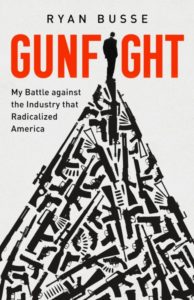Back in November my 26-year-old niece Anita texted me:
Beth, quick question for you do ya have any interest in possibly going to A Christmas Carol at Goodman Theater on Saturday the 11th of December at 2
Here in Chicago some families go to the Goodman to see A Christmas Carol each and every Xmas. How pedestrian! Truth be told, I kind of sort of rolled my eyes at Anita’s suggestion. Bah humbug! I had never ever gone to A Christmas Carol at Goodman, and thought it best I keep it that way.
But then came the back-and-forth texts. Anita’s girlfriend Kelly would be coming as well, they had chosen the December 11 performance because that’s the one offering a pre-show audio tour for blind people. Anita and Kelly are a fun couple, smart and witty, we share a lot of laughs when we’re together. And, okay, it was pretty flattering to think they’d go out of their way to spend an afternoon at the theater with their old blind great aunt Beth. No more bah humbugs! I said yes. And am I glad I did!
Tickets for A Christmas Carol are usually quite expensive, but in its efforts to be “a theater for all” and a “place where diverse audiences experience extraordinary productions,” Goodman offers reduced-price tickets to people who attend the touch tours. Anita and Kelly were accompanying their blind old great-aunt Beth, so they got the same discount I did.
Black Lab Luna guided me from home to the theater last Saturday, I showed my proof-of-double-vaccination card with pride, and handed over my ticket. “Box seats!” The ticket-taker sounded impressed.
When Goodman’s’ house manager/accessibility coordinator Andy Wilson greeted me in the lobby, he explained they save those box seats for people who might find accessing regular theater seats difficult. “Your box is on the main floor,” he explained. “No stairs!” Bonus: Box seats are great for social distancing, and Luna could sprawl during the show without bothering anyone else.
Andy directed Luna and me to our starting point in the lobby, where they had three of the understudies’ costumes available for me to touch (the ones the actors would be wearing were not available for obvious reasons). I appreciated having the costumes displayed on dressmaker dummies — that way I can feel the fabrics with structure and imagine how they might look — and fit. A costumer from the show was on hand to give me the back story on each piece. My favorite? A top and hoop skirt worn by the Ghost of Christmas Present. I was encouraged to touch the fabric, the stitching, the piping, the braids, the brocades, the hoops, everything.
Anita and Kelly showed up in time to enjoy some of the costumes, and from there they escorted me into the theater to meet some of the main actors in the play for the pre-show. One of them was the one playing the Ghost of Christmas Present — the one who’d be wearing the hoop skirt. “I’m supposed to look like a Christmas tree,” she laughed, then went on to explain the real reason behind the hoop skirt. “It hides the harness I have to wear.”
Harness?
Yes, harness. She wears it to hold up the weight of the Christmas tree hanging off her shoulders. “A couple other actors wear harnesses under their costumes, too,” she added, explaining that Scrooge and the Ghost of Christmas Past actually fly during the show. “They need harnesses on to do that.” My mind went right to my childhood, when I marveled at the TV presentation of Sandy Duncan flying in the Broadway revival of Peter Pan.
The actors chatted briefly about their role in the play, their appearance and/or physicality and how they might approach that in their portrayal. The Ghost of Christmas Present described herself as having “brown skin and black hair” and told us she plays a charwoman near the end of the play, too. Each actor gave us a few lines from the play, too. Astonishing to hear the Ghost of Christmas Present sing one of her lighthearted lines from when she’s in her hoop skirt, then transform to a baritone charwoman for that later scene…all right before my very ears!
The last actor to describe themselves was the Ghost of Christmas Past. You can get a great example of how generous the actors are with their descriptions hear by listening to a recording of Lucky Stiff describing what it’s like to dress as the Ghost of Christmas Past for every performance. (Use the link to the audio player below.)
Ghost of Christmas Past Goodman Touch Tour
When Goodman’s Andy Wilson explained that they switch up the performance every year, I couldn’t help but laugh. “Sounds like this one’s gonna be like Cirque du Soleil!”
- Musicians on stage throughout the play portray buskers on the street outside of Scrooge’s office –sounded to me like a bass, a French horn, a violin, a recorder, an acoustic guitar, even an…accordion! So nice to hear live music on stage again.
- Rather than Scrooge having a nephew Fred, in this version he has a niece Frida who invites Scrooge over every Christmas.
- The party where all the dancing goes on is traditionally at Mr. Fezziwig’s place, (he’s a businessman who uses Scrooge as his banker) but in this version the business is owned by two women. Mrs. Fezziwig & Mrs. Fezziwig dance together in this scene.
- Tiny Tim is portrayed by a 12-year-old Chicago girl whose parents immigrated here from India
- And lest we forget: some of the characters fly — Scrooge flies with Lucky, the Ghost of Christmas Past.
Anita, Kelly and I learned most of what I’m reporting above from going to that “audio tour” before the show. During the pre-show the actors explained to me exactly when the flying scene would happen, how the flying contraption works, how heavy it is to wear and so on. Audio describer Jason Harrington jumped on stage at one point to walk around it and describe the setting and scene changes — so helpful.
Forgive me for going on and on about this. I had a wonderful time with Kelly and Anita, they both were so kind-hearted and very helpful to me: ordering coffee before the show, snacks during intermission and then a Lyft ride home afterwards. Our afternoon at the Goodman finally got me into the Christmas spirit this year. I recommend A Christmas Carol at the Goodman to you all. It’s a winter wonderland of fun.


